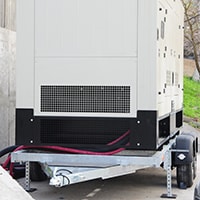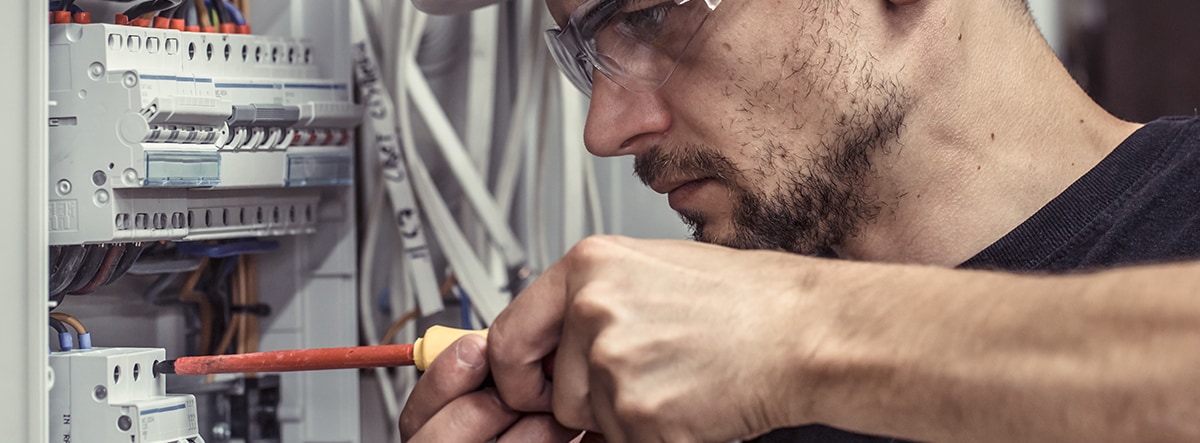
Standby Backup Generator Installation Guide
How to Install a Home Standby Generator
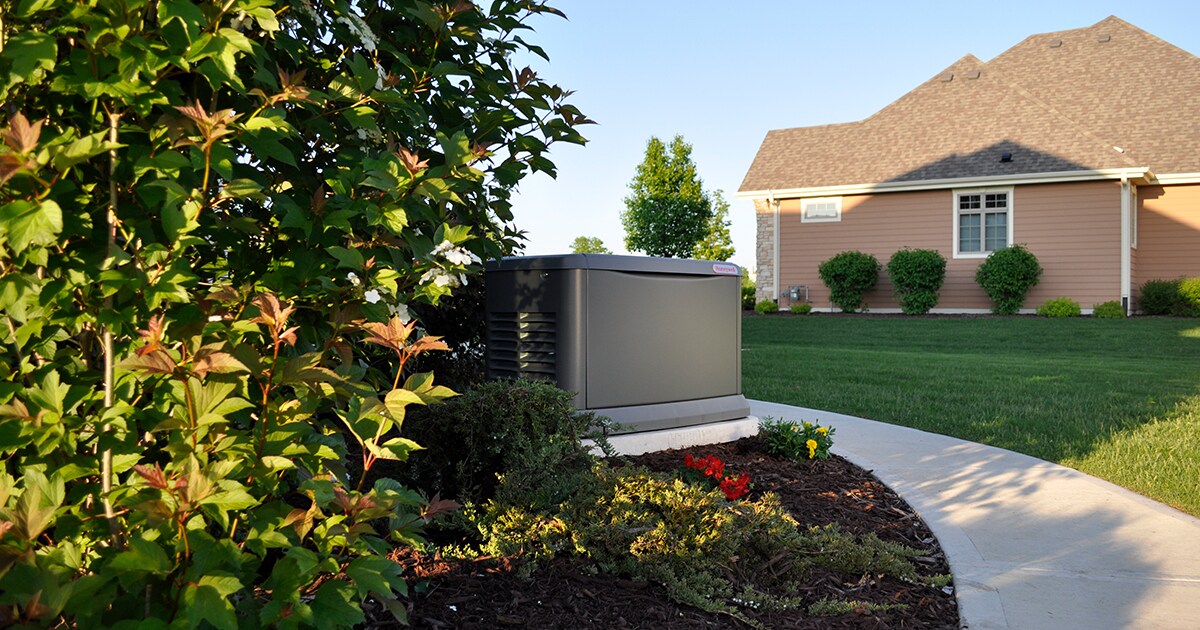 Installing something new at your house is exciting, especially if you've been waiting a while to get it done. When installation day finally arrives, you might feel like a kid on their birthday.
Installing something new at your house is exciting, especially if you've been waiting a while to get it done. When installation day finally arrives, you might feel like a kid on their birthday.
A standby generator installation is no exception. However, installing a standby generator takes a bit more planning than some other appliances. We'll go over the basic steps you can expect during the home generator installation process to get you on your way.
Plan Ahead
A standby generator is not something you can expect to order and get installed overnight. In fact, it could take weeks or more in some instances. There are a few reasons for this:
1. You have to find a contractor
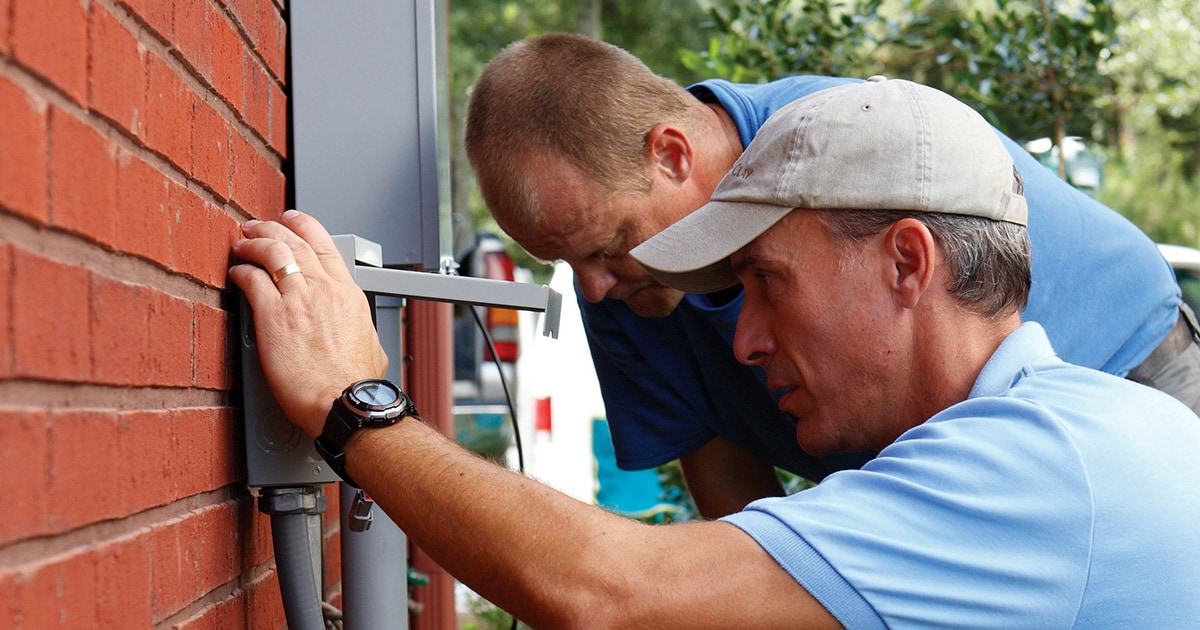 Some folks might try to "DIY" it, but we strongly recommend against doing that. Not only is electricity dangerous if you're not 100% sure what you're doing but trying to install a standby generator if you're not a professional will void your warranty.
Some folks might try to "DIY" it, but we strongly recommend against doing that. Not only is electricity dangerous if you're not 100% sure what you're doing but trying to install a standby generator if you're not a professional will void your warranty.
If you need more of a reason, trying to work on your gas utility is not just risky business, it's illegal in most states. It's best left to the professionals and you'll be happier and safer too!
2. You Need to Get a Permit
Many local municipalities require you to get a permit before installing a standby generator on your property. If you don't get one, you might get away with it until you want to sell your home, at which point you won't pass your inspection and could face stiff penalties. Plus, getting a permit gives you peace of mind that the installation was done correctly and conforms to all state and local safety codes.
Typically, you need an installer to obtain a permit, which is another reason you won't want to DIY it. Before installing, always contact your village to check if you need a permit. Getting a permit can last a few days to a week and may require a small fee.
3. Unload the Generator
This one is obvious. What many people don't think about, though, is physically getting the generator on your property for installation.
Standby generators weigh hundreds of pounds, so if you are having it delivered to your home, make sure to get lift gate service so the truck can lower the unit to the ground. Otherwise, you'll have to call your neighbors to help you get it off the truck, which can be dangerous.
Whole House Generator Installation Costs
The cost of a standby generator installation depends on your contractor and local labor rates. It also depends on how large your generator is and the complexity of the installation. Expect to pay at least $1,000 but it could cost two or even three times that in some cases. Don't forget about your permit, which could cost around a hundred dollars.
These estimates do not include the cost of the home generator itself, which varies widely depending on the wattage.
Choose the Installation Location
Since generators release a toxic gas, called carbon monoxide, as part of the combustion process, placing the unit in a proper location is a matter of safety.
When mapping out the location with your generator installer, be sure to consult the installation manual that came with your generator. Minimum distances can range from 5 feet to 10 feet away from your home and openings, especially when it comes to doors and windows. Choose a level surface that won't flood away from trees and foliage.
If possible, try and install your generator close to the gas meter. This will reduce the amount of necessary gas piping, save material costs, and reduce friction loss (that could lower gas pressure).
Prep the Generator Base
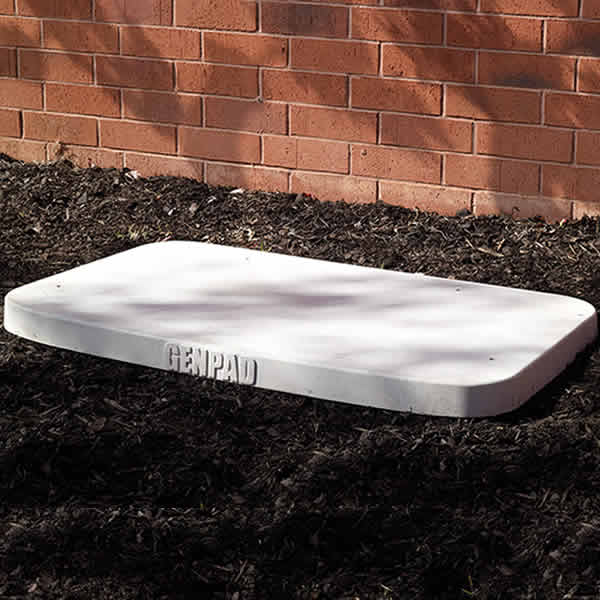 The main purpose of preparing your generator's base is to keep it level and reduce noise levels.
The main purpose of preparing your generator's base is to keep it level and reduce noise levels.
Some homeowners prefer the sturdiness of concrete, which should be poured with enough time for it to properly cure prior to installation day. But, concrete is expensive and the conditions have to be just right.
That's where a pre-fab generator pad comes in. Pour pea gravel onto the spot that you'll be installing your generator and level it out. Use a minimum of four bags of gravel to ensure the base is sufficiently elevated and level.
Once you lay your bed of pea gravel, you can install the generator pad above it. The pad provides an extra hard, flat surface on which your generator can rest. If you live in a coastal area, be sure to get a pad that is 'hurricane-rated'.
Install the Standby Generator
The very last step of the installation process is hooking up the generator. Your contractor will also install the generator transfer switch either in your basement or outside near your electric meter at this time.
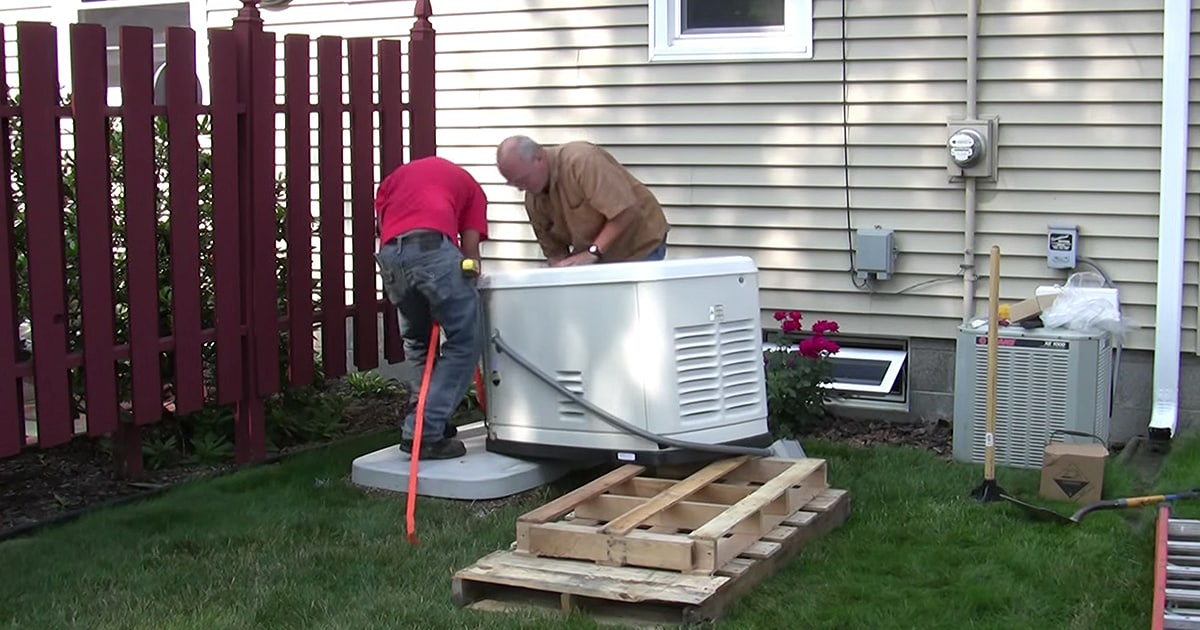 Your installer should then mount and secure the standby onto the generator pad. Typically, installers use nylon straps to lift and pivot the generator into place.
Your installer should then mount and secure the standby onto the generator pad. Typically, installers use nylon straps to lift and pivot the generator into place.
Once the generator is in place, your contractor will install a grounding rod to protect against electrical surges. Next, they will connect your transfer switch to the generator and, lastly, connect your fuel source.
The final step is to verify everything has been properly and safely connected then conduct start-up and diagnostics. Once the system is working properly, your installation technician will set up a maintenance schedule for the generator to "exercise" (usually once a month), set up any remote monitoring (if applicable), and go over the user manual with you.
Power On!
The above is what you can expect to happen during a typical standby generator installation. If you have a licensed, professional installer then everything should go smoothly and you'll have a reliable source of backup power before you know it.
![]() NEXT: Shop All Home Generators
NEXT: Shop All Home Generators
Share My Personal Information\":{\"href\":\"https:\\\/\\\/ferguson.bigidprivacy.cloud\\\/consumer\\\/#\\\/dMf02ovZbN\\\/Form-NHWperWAaFNVIQK\",\"title\":\"Do Not Sell or Share My Personal Information\"}},\"About Us\":{\"Our Story\":{\"href\":\"https:\\\/\\\/www.powerequipmentdirect.com\\\/stories\\\/1982-How-We-Make-Buying-Technical-Products-Simple.html\",\"title\":\"eComfort's Story\"},\"Careers\":{\"href\":\"https:\\\/\\\/www.powerequipmentdirect.com\\\/stories\\\/1924-Job-Openings.html\",\"title\":\"Careers @ Power Equipment Direct\"},\"Newsroom\":{\"href\":\"newsreleases.php\",\"title\":\"eComfort News Center\"}},\"Contact Us\":{\"phone\":\"866-554-4328\",\"hours\":[\"M-F: 8-5 CST\",\"Sat: Closed\",\"Sun: Closed\"]}}","storeLinkJSON":"{\"AC Wholesalers\":{\"href\":\"https:\\\/\\\/www.acwholesalers.com\",\"title\":\"AC Wholesalers\"},\"Air Compressors Direct\":{\"href\":\"https:\\\/\\\/www.aircompressorsdirect.com\",\"title\":\"Air Compressors Direct\"},\"Chain Saws Direct\":{\"href\":\"https:\\\/\\\/www.chainsawsdirect.com\",\"title\":\"Chain Saws Direct\"},\"Chippers Direct\":{\"href\":\"https:\\\/\\\/www.chippersdirect.com\",\"title\":\"Chippers Direct\"},\"eComfort\":{\"href\":\"https:\\\/\\\/www.ecomfort.com\",\"title\":\"eComfort\"},\"Electric Generators Direct\":{\"href\":\"https:\\\/\\\/www.electricgeneratorsdirect.com\",\"title\":\"Electric Generators Direct\"},\"Leaf Blowers Direct\":{\"href\":\"https:\\\/\\\/www.leafblowersdirect.com\",\"title\":\"Leaf Blowers Direct\"},\"Log Splitters Direct\":{\"href\":\"https:\\\/\\\/www.logsplittersdirect.com\",\"title\":\"Log Splitters Direct\"},\"Mowers Direct\":{\"href\":\"https:\\\/\\\/www.mowersdirect.com\",\"title\":\"Mowers Direct\"},\"Power Equipment Direct\":{\"href\":\"https:\\\/\\\/www.powerequipmentdirect.com\",\"title\":\"Power Equipment Direct\"},\"Pressure Washers Direct\":{\"href\":\"https:\\\/\\\/www.pressurewashersdirect.com\",\"title\":\"Pressure Washers Direct\"},\"Snow Blowers Direct\":{\"href\":\"https:\\\/\\\/www.snowblowersdirect.com\",\"title\":\"Snow Blowers Direct\"},\"String Trimmers Direct\":{\"href\":\"https:\\\/\\\/www.stringtrimmersdirect.com\",\"title\":\"String Trimmers Direct\"},\"Sump Pumps Direct\":{\"href\":\"https:\\\/\\\/www.sumppumpsdirect.com\",\"title\":\"Sump Pumps Direct\"},\"Tillers Direct\":{\"href\":\"https:\\\/\\\/www.tillersdirect.com\",\"title\":\"Tillers Direct\"},\"Water Pumps Direct\":{\"href\":\"https:\\\/\\\/www.waterpumpsdirect.com\",\"title\":\"Water Pumps Direct\"}}","socialLinkJSON":"{\"Facebook\":{\"href\":\"https:\\\/\\\/www.facebook.com\\\/eComfortusa\",\"icon\":\"icon-facebook\",\"title\":\"Facebook\"},\"Twitter\":{\"href\":\"http:\\\/\\\/www.twitter.com\\\/eComfortUSA\",\"icon\":\"icon-twitter\",\"title\":\"Twitter\"},\"Pinterest\":{\"href\":\"http:\\\/\\\/pinterest.com\\\/ecomfort\\\/\",\"icon\":\"icon-pinterest\",\"title\":\"Pinterest\"},\"YouTube\":{\"href\":\"https:\\\/\\\/www.youtube.com\\\/c\\\/Ecomfortholdings\",\"icon\":\"icon-youtube\",\"title\":\"YouTube\"},\"Instagram\":{\"href\":\"https:\\\/\\\/www.instagram.com\\\/ecomfortusa\\\/\",\"icon\":\"icon-instagram\",\"title\":\"Instagram\"},\"LinkedIn\":{\"href\":\"https:\\\/\\\/www.linkedin.com\\\/company\\\/power-equipment-direct\\\/\",\"icon\":\"icon-linkedin\",\"title\":\"LinkedIn\"}}","miscLinkJSON":"{\"Terms of Use\":{\"href\":\"terms-of-use.php\",\"title\":\"Terms of Use\"},\"Privacy Policy & Security\":{\"href\":\"privacy.php\",\"title\":\"Privacy Policy and Security\"},\"Cookie Policy\":{\"href\":\"privacy.php#cookiePolicy\",\"title\":\"Cookie Policy\"},\"CA Privacy Rights\":{\"href\":\"privacy.php#californiaPrivacyRights\",\"title\":\"CA Privacy Rights\"},\"copyright\":\"© 2024 Power Equipment Direct. All Rights Reserved\"}","checkoutMiscLinkJSON":"{\"Privacy Policy & Security\":{\"href\":\"privacy.php\",\"title\":\"Privacy Policy and Security\"},\"Cookie Policy\":{\"href\":\"privacy.php#cookiePolicy\",\"title\":\"Cookie Policy\"},\"Terms of Use\":{\"href\":\"terms-of-use.php\",\"title\":\"Terms of Use\"},\"copyright\":\"© 2024 Power Equipment Direct. All Rights Reserved\"}","expertJSON":{"imageURL":"https:\/\/www.powerequipmentdirect.com\/images\/experts\/expert-main-15-18.png","href":"\/ecomfort-product-expert.php","title":"Contact Ken @ eComfort","expertName":"Ken","expertTitle":"eComfort Product Expert"},"bbbJSON":{"imageURL":"https:\/\/www.powerequipmentdirect.com\/images\/badge-bbb.png","imageAlt":"Better Business Bureau","href":"http:\/\/www.bbb.org\/chicago\/business-reviews\/industrial-equipment-and-supplies\/power-equipment-direct-in-bolingbrook-il-57001088","title":"eComfort - A+ Rating - Better Business Bureau"},"zipCode":null,"phoneNumber":"866-554-4328","loginToken":"page cache precludes the use of csrf tokens","iterable":"e4b27e68b9c84fbb940829a0a9ee29d7","newNav":false}


